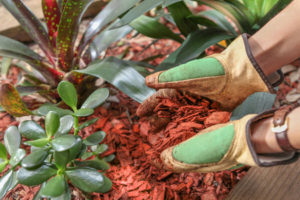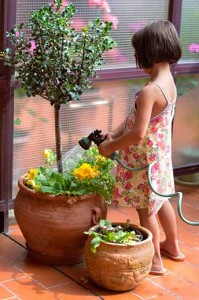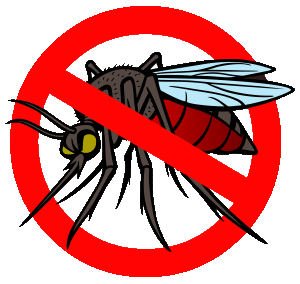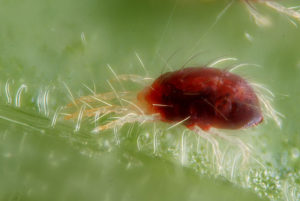
A Summer tree care plan is extremely important to make sure your tree survives that harsh heat and summer droughts. Below you will find what summer tree care you should be performing from June-August.
Inject The Trunks Of Elm & Ash Trees
Elm Trees: Dutch Elm disease, one of the most destructive shade tree diseases in North America, is caused by a fungus spread by the elm bark beetle. Out of the 77 million elms in North America in 1930, over 75% had been lost by 1989. To this day, the Elm population across the United States is still battling this toxic disease. If you have an elm that is not yet infected by Dutch Elm disease our Arborists recommend diligently injecting your tree with preventative fungicide every 3 years.
Ash Trees: The Emerald Ash Borer (EAB) is considered the most destructive urban forest pest ever seen in North America. Introduced to Michigan from China sometime in the 1990’s, it is responsible for killing more than 50 million ash trees in over 20 states. Once infested ash trees have a 99% mortality rate if not treated. Our Arborists recommend your Ash trees be injected with an insecticide every 2 years.
Add these injections into your summer tree care plan.
Aerate To Prevent & Fix Soil Compaction
In most urban and suburban areas the soils are very compacted, typically due to construction or high traffic which is why soil management is so important. For example in forests, the top 6 inches of soil is 50% oxygen. However; the average urban soil is only 10% oxygen. This lack of oxygen and pore space doesn’t allow enough water, oxygen, or nutrients to reach the tree’s roots. This can create major tree problems including lack of root growth and decline of overall tree health.
Aeration can fix compacted soils and prevent compaction in the future. Aeration uses high-velocity air tools and techniques to properly aerate the tree’s critical root zone (CRZ) loosening the soil. This creates macro and micropore space, making room for root growth.
Prune
Dead, dying, and diseased branches are a danger to people and property. These are often the limbs that break and fall during summer storms. For the safety of you family and home make sure to get these branches pruned as part of your early summer tree care in order to avoid accidents.
Need Help With Summer Tree Care?
Get a QuoteOr Call 703.573.3029

Re-Apply Mulch If Needed:
Heavy rains and foot traffic can sometimes wash away mulch. Check to make sure it is 2-3 inches thick. If not, you will need to re-apply for ideal summer tree care.
Applying mulch around trees is one of the best things you can do for the health of your trees. Especially for young trees, mulching is a quick and cost-effective technique that provides numerous benefits.
How To Apply Mulch:
Size: The best mulching goes out as far as the drip line of the tree. However, this isn’t reasonable for most homeowners with large trees. If this isn’t practical, apply mulch in a 2 to 3-foot radius around the tree instead.
Depth: About 2-4 inches
- Do not pile the mulch against the trunk of the tree. Instead keep it away from the trunk, so that the root flare zone is visible.
- To refresh the look of mulch, lightly rake the top layers of the mulch, or simply remove the old mulch and replace with new mulch. Don’t pile new layers on top of old ones.
- Do not use fresh wood chips for mulching around young trees. Fresh wood chips have a higher acidity and can injury a young tree.
 Water To Keep Plants Hydrated
Water To Keep Plants Hydrated
In summer, trees and shrubs are faced with high temperatures. In one day, a large tree can lift up to 100 gallons of water out of the ground if it’s is available. And like humans, the hotter it is the more water trees and shrubs need. But overwatering can also have a negative effect on trees, essentially drowning their roots. Take a look at our tips below to make sure your tree is getting the right amount of water it needs to survive these heat waves.
Watering Tips For Summer Tree Care:
- Focus on the critical root zone when watering. Wetting foliage is pointless and can promote the spread of diseases.
- DON’T use a sprinkler. This only wets the top layer of soil and doesn’t properly water the tree.
- Water in the morning to avoid evaporation and to help trees deal with the heat throughout the day.
- Water deeply and thoroughly 1 to 2 times a week.
- Put your normal hose somewhere in the critical root zone.
- Turn hose on to a dribble
- Leave for 2-3 hours
- Move the hose to a different spot in the critical root zone and leave for 2-3 hours. Repeat this step 1-3 times.
- You want the soil to be moist but not soaking. You should NOT be able to make a mud ball out of the soil.
- It’s okay for some portions of the soil to be wet and some to be dry.
 Mosquito Program
Mosquito Program
Although not typically part of your summer tree care plan, it’s important to invest in a mosquito program. Mosquitoes and ticks bring deadly diseases like Zika, West Nile, and Lyme, into your property. Protect your family with our Organic Mosquito & Tick Control Program and these DIY tips.
- Keep doors & windows closed so that mosquitoes can’t enter your home.
- If you utilize screen doors/window screens, periodically check them for small rips and tears which mosquitoes could enter through.
- Do not allow any water to stand near your house. Mosquitoes bred and multiply in stagnant water. Make sure to pour out kiddie pools, buckets, or children’s toys that collect rain water.
- Change water in bird baths and scrub them twice a week.
- If you have outside pets, empty their water bowls daily.
- Clean your gutters. Clogged gutters create a perfect environment for mosquito breeding.
- Mosquitoes are most active at dusk & dawn. If possible remain indoors during these times.
Watch For Tree & Shrub Pests:

Tree pests can ravage your landscape and leave lasting damage. The warm weather of summer helps tree insects reach high population levels quickly. This means you need to act fast after you notice a problem or your trees will have extensive damage.
Common Summer Pests Include:
- Spider Mites
- Lace Bugs
- Aphids
- Sawflies
- Root Rot
- Wilt
- Leaf Spot
Learn About:
